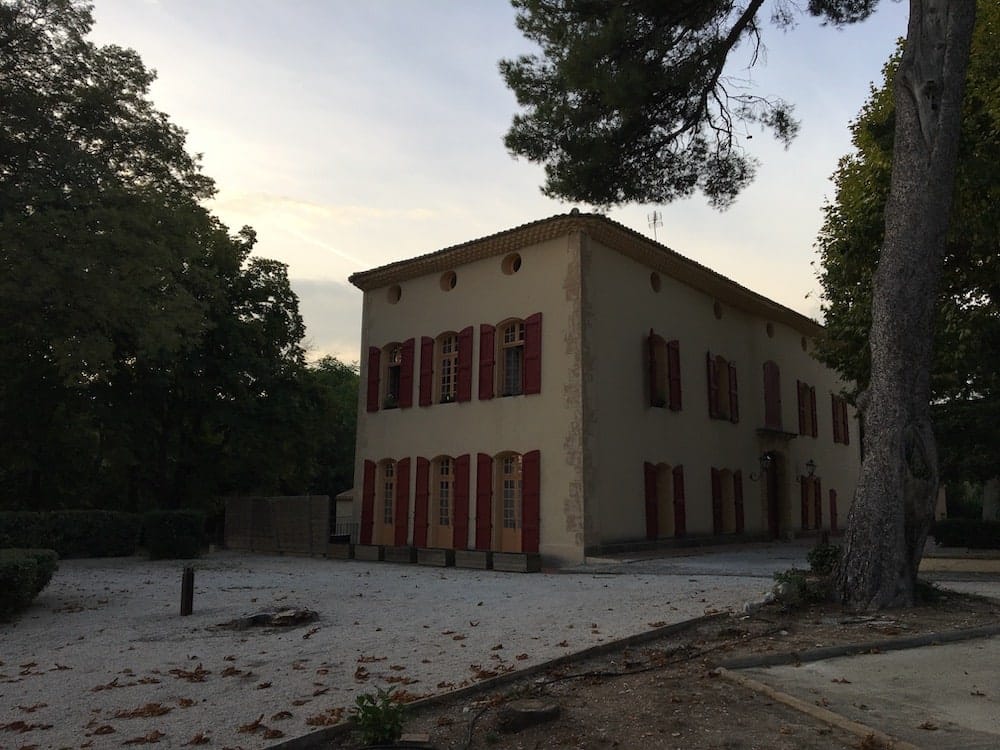
An elegant bastide, or country house (a part of it, anyway) was our home in Aix-en-Provence. We looked out onto the bucolic French countryside and bought our croissants from the bakery next door. The painter Cezanne was born in the town and we went on an ‘in the steps of Cezanne’ guided walk, which included the history of this very pleasant place, with its narrow streets, fresh food markets and old roman fountains. Aix missed out on the industrial revolution because they didn’t want a railway, so it has remained a rural community. There are 50,000 students out of a population of 150,000, and they were registering for the new year; charging through the narrow streets and lining up for Vietnamese food in the cheap and cheerful end of town. Occasionally you’ll look up and see the magnificent flat- topped cliffs of Montage Saint-Victoire in the distance. Cezanne painted this mountain many times, but it seems out of place on a farming plain, and I had forgotten it was part of the landscape.
In Aix, we began our fascinating ‘Tour des Toilettes’. Coffee and croissants plus the human physiology result in a certain urgency about an hour after breakfast, just when you are starting your day’s sightseeing. At the Aix Tourist Office, an employee who must be the most badly hired customer person in the world, mis-directed us to what I call a Tardis Toilet (Dr Who fans will know what I mean), and failed to tell us we needed exact change to get in. One’s body is in a certain state of expectancy when one has been searching frantically for a quarter of an hour for a facility one needed half an hour ago. Our desperation was obvious, and a kindly fellow tourist gave us the 50 cents we needed. But we both had to go. With a Gallic shrug, we shared the free-standing pod, and tried to look nonchalant as we exited together.
The automatic self-cleaning public loo units were brand new in the early 1980s, when I went to work in France for my first ‘real’ job. There were two urban myths about them. One was that the door would sometimes open you were still on the loo (the door unlocks after a certain length of time) and the second was that a ‘customer’ had failed to get out of the unit before the floor lowered and water poured in to clean it. He hit his head, was knocked unconscious and drowned. I think my discomfort comes from standing outside it in the open waiting for the previous user to exit and the thing to self-clean. You can’t pretend you are waiting for a bus. I saw a young nun in a full white habit waiting outside one by a cathedral. She looked as self-conscious as a teenager, and I knew how she felt.
As we travelled West by car and visited other French cities, we found that most of them now let you pee for free. Some of them have an additional ‘pissoir’ section on the end, which conveniently let MLH relieve himself and continue a conversation with me while I waited to get into the Tardis. In elegant Bordeaux, instructions were in French and English, and then muzak thoughtfully filled the air to accompany you through your ablutions.


The sun was still strong, and one reason for the trip is to extend summer for as long as possible, so we drove from Aix to the coast and spent a day in Cassis, a posh and pretty fishing port on the Mediterranean. The seafood was good, the wine equally, and the water warm. We went on a boat trip to see the unusual cliff formations of the Calanques, with their deep blue canyons full of fish. Quarries near here supplied the stone to build the Statue of Liberty in New York. You must hike or boat to the Calanques, and there were plenty of kayakers sunning themselves on the rocks and jumping into the water. The sunset from the tallest sea cliff in France, Cap Canaille, was gorgeous.
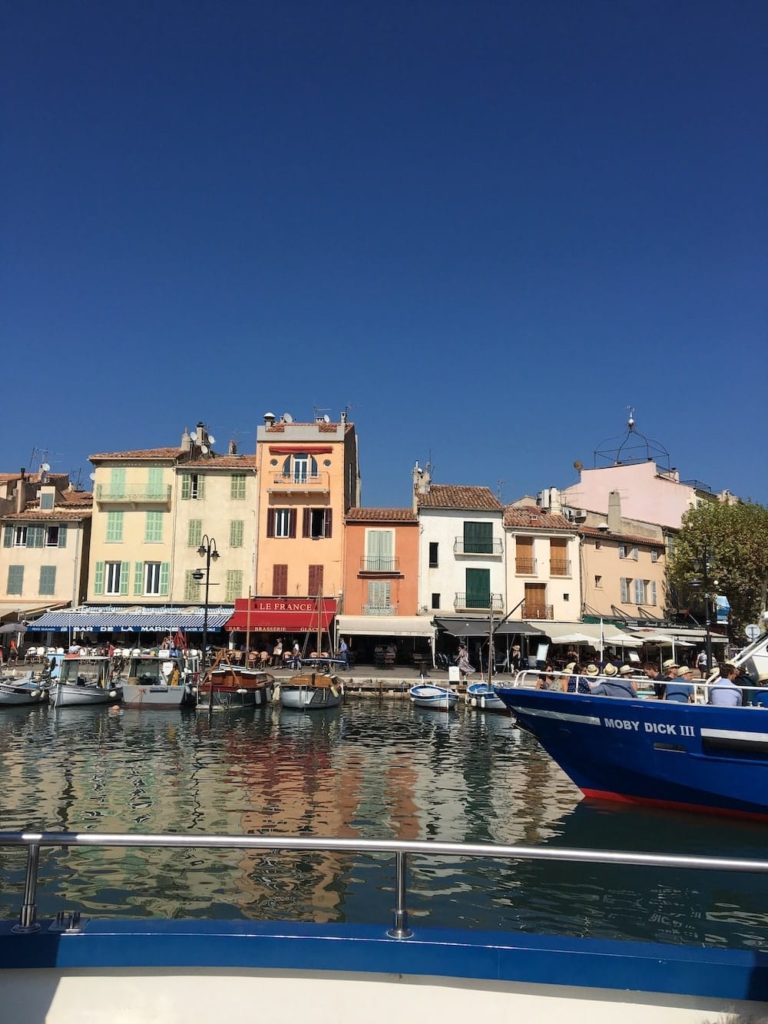
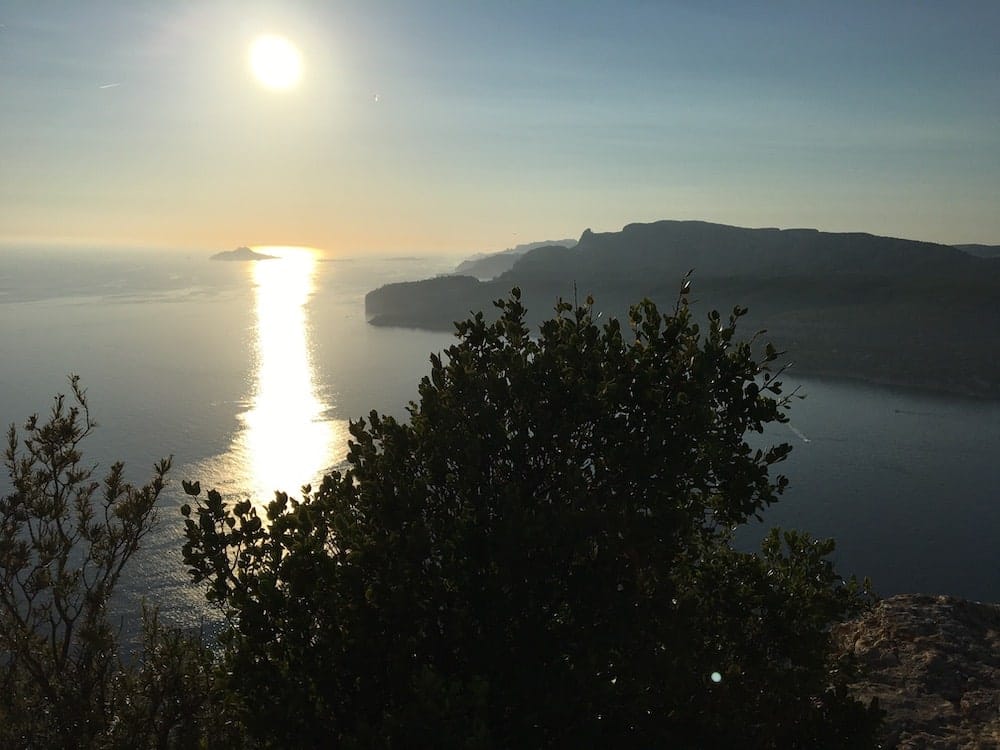
Marseille was vastly less genteel than Aix-en-Provence or Cassis. MLH had to use all his considerable driving skills from Cairo to get us safely through the helter-skelter tiny streets. Mopeds and motorbikes buzzed around haphazardly, not following any rules of the road except ‘let’s see who can get through this tiny space the fastest’. I hadn’t expected to go to Marseille, and so didn’t have any preconception of what it would be like. Lively and big is an appropriate description – the old port and old city the touristy bit – is clean and picture post cardy and has some very interesting old and new buildings. In the suburbs, every building and wall is covered in graffiti. Everyone smokes. The large marina is full, there were plenty of largish yachts coming in for supplies and setting off. We were there on a Friday, which must be wedding day for the many Algerian and Moroccan inhabitants. These were not big weddings. Nobody looked very well off. They lined up around the Registrar’s office, the brides in frothy confections of dresses, fanning themselves in the heat and asking friends to check their makeup every five seconds, the little bridesmaids with ribboned hair hopping around them in excitement. For ten minutes before they went in to the building, the folk band played traditional wedding songs in Arabic and the groom did a joyful dance in front of the bride while guests set off firecrackers and confetti bombs and the women ululated.

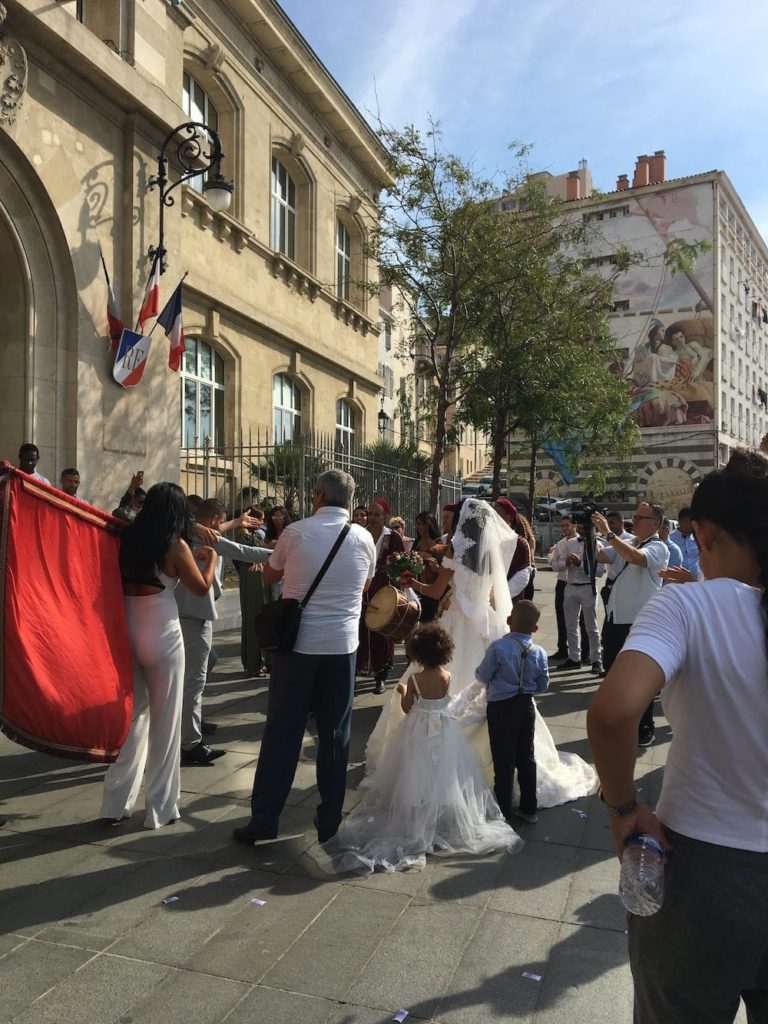
On the way to Montpellier, we stopped to visit the Roman aqueduct at Pont du Gard. This is over 2,000 years old. It really is the case that the best Roman ruins are in France, which was one of Rome’s most successful colonies. In the region you can also visit a complete amphitheatre and an arena in a much better state than the Coliseum in Rome. We learned a lot about the construction and use of the aqueduct, which was built to supply the city of Nimes. Did you know that the average citizen of Nimes at the time used over twice as much water per day as a European does now? Outrageous.

As you might expect, they built all the cities in this part of France on rivers, hills, on the coast for defence and trade reasons. There are a lot of medieval buildings, old walled towns, and cardio exercise going up and down the steps. Every place is different though, just as the people are different. In the tourist office in Montpellier, the young man helping us warned us we would see nothing as old as the Pont du Gard aqueduct in his city. “Montpellier is very new.” He sniffed. “How new?” “Oh, it wasn’t established until the 10th century, Napoleon built our aqueduct.” Nevertheless, Montpellier has the oldest continuously running medical school in the world, dating from the 13th century, so it seemed a good place to have an extensive walkabout, knowing there were plenty of medical students in case of a crisis.
Modern Montpellier mixes the old and the new pleasingly. At the top of the old town on this Sunday morning, a flea market was winding up under the plane trees lining a formal park. “I like how the French do trees,” MLH commented. “They are in straight lines and evenly spaced.” Ah, an engineer appreciating logic and precision!

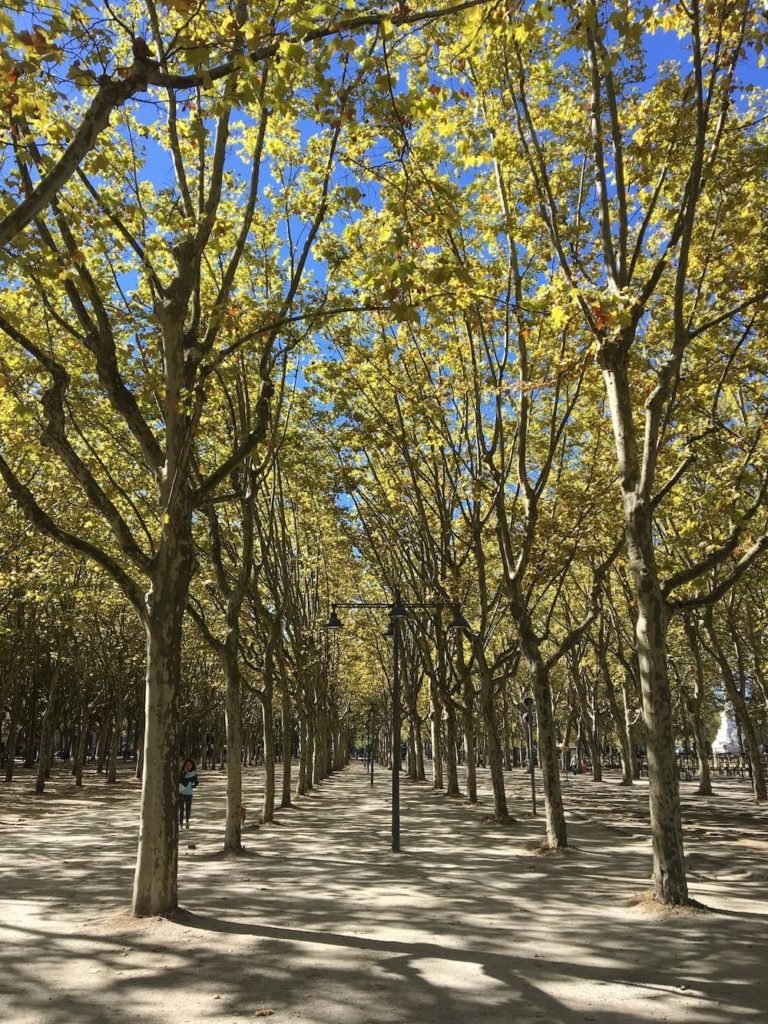
I told him to watch how the French do lunch, as it was almost noon. There you have organization married to passion. Sure enough, the moules frites (muscles and fries) and oyster carts were doing a brisk business, and the vendors were setting up their folding tables and chairs, and setting out their food on proper plates, a beading bottle of the palest pink rose wine in the centre of the table. No sandwiches or forking salads out of Tupperware. I wouldn’t have attempted to buy anything just then. We managed another swim from the lovely sandy beach of La Grande-Motte, on the edge of the Camargue salt marshes and sand dunes, before leaving the South coast to cut across West, just North of the Pyrenees Mountains, to the Atlantic Coast and Bordeaux. And that’s where the temperature finally became fall-like and MLH’s culinary education really started.